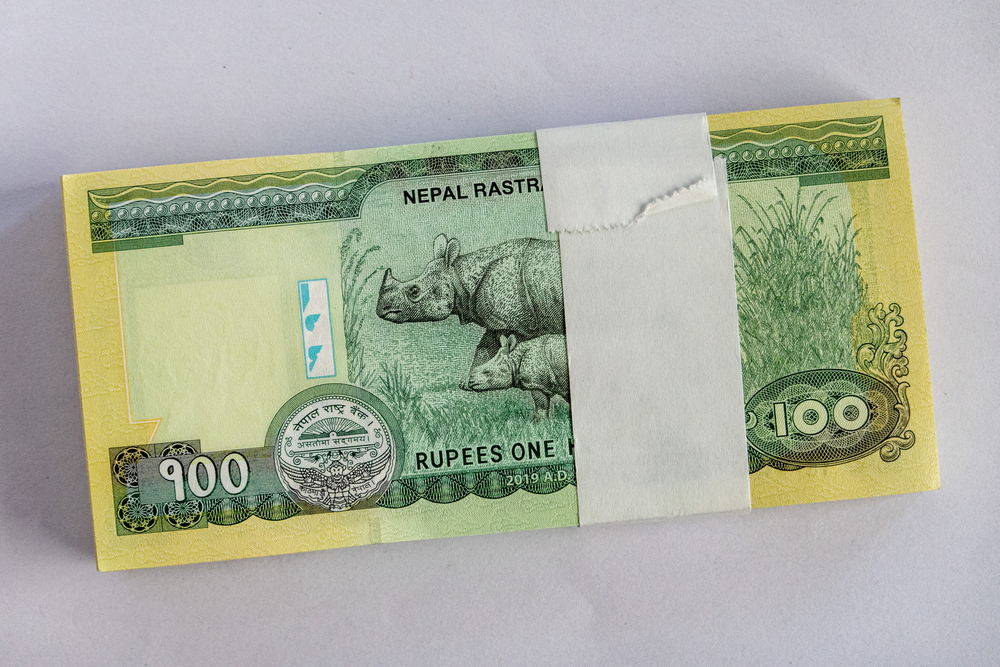Export
Definition:
Exports are goods and services that are produced domestically, but then sold to customers residing in other countries. Exports lead to an inflow of funds to the seller’s country since export transactions involve selling domestic goods and services to foreign buyers.
Types of Exporting
- Indirect Exporting
- Direct Exporting
Direct Exporting
Direct exporting is selling the products in a foreign country directly through its distribution arrangements or through a host country’s company.
Although a direct exporting operation requires a larger degree of expertise, this method of market entry does provide the company with a greater degree of control over its distribution channels than would indirectly exporting.
Indirect Exporting
Indirect exporting is the process of selling products to an intermediary, who will then sell your products directly to customers or importing wholesalers.
Methods Of Exports in Nepal
Rules related to exporting from Nepal is governed by the Ministry of Industry, Commerce and Supplies and Department of Customs, under the Ministry of Finance. Besides some prohibited items, most of the goods produced in Nepal can be exported after completing necessary formalities listed in the Guide to Export section below
Basic Document Requirement
- Business registration certificate (one time submission)
- Permanent Account Number (PAN) with VAT registration
- EXIM Code
- Single Administration Document (SAD)–Pragypan Patra or The Yellow Form
- Certificate of Origin (COO) and Generalized System of Preferences (GSP) Form A wherever applicable. Other additional certificates, is necessary
- Packaging list
- Commercial Invoice
- Payment Certificate—Letter of Credit (L/C) or certificate of advance payment
Prohibited List
- Articles of Archaeological and Religious importance: national and foreign coins of archeological value; idols of gods and goddesses, palm leaf inscription (Tad Patra), Plant leaf inscription (Bhoj Patra; scroll (Thanka paintings) of historical importance.
- Industry / Raw Materials: Raw hide (including dry salted); raw wool; all imported raw materials, parts and capital goods.
- Narcotics: Narcotics Drugs and Psychotropic Substance as defined in the Single Convention of Narcotics, 1961)
- Articles of Industrial Importance: explosives materials and fuse or materials needed there for; materials used in the production of arms and ammunition.
- Conserved wildlife and Related Articles: wild animals, bile and any part of wild animals, musk; snake skin, lizard skin
- Conserved bio-diversity and environmental protection related forest products: marsh orchid (Dactylorhiza hatagirea); okhar (juglans regia); lichen; different types of timbers; unprocessed asphaltum.
- Other products: imported petroleum and oil products; extracted sand, gravel, and boulders.
Guide to Export
To start exporting, you will first need to get registered as either a manufacturing industry or a trading firm. If you are a home-based producer and do not have any employees, you can register your business as a private firm at your local ward office. Then get PAN and VAT number from the local office of Inland Revenue Department. After that, to become an exporter, you will have to obtain an EXIM code. You can try our Export Readiness Checker tool which will guide you.
Besides completing these formalities, you will have to find a trade partner in the country you want to export to, negotiate the terms of trade—such as price and volume of the goods to be sold, modes of transport, selecting freight forwarders and insurer, determining payment channels, and other formalities related to customs, certification, etc. The following section will provide a step-wise guide to exporting from Nepal.
STEP ONE: Find Trade Partners
First, decide which countries you want to export your items to. Use market analysis tool to identify promising markets and major export market guide to find potential sources of information on finding a suitable trade partner for you. Participating in trade fairs will also allow you to connect with international buyers, check upcoming events . Getting registered at this Portal will also help you get connected with buyers, find out more.
STEP TWO: Conclude Sales Contract
Once you have found a trade partner, proceed to complete transactions with them. You will most likely negotiate on your product prices, quantity, date of delivery, possible mode of payment and trade terms. Remember, after you conclude the sales contract you will have to issue following documents to the importer – Pro-forma Invoice, and ask your trading partner to issue a Purchase Order for you. Also, note that all the monetary transaction will have to be done through banking channels (more on this in STEP FIVE)
Determine Trade Terms (INCOTERMS)
While negotiating the terms of trade with your trading partner, you will most likely have to negotiate the commercial trade terms as well. These international commercial terms (INCOTERMS) are globally recognized trade terms between you and your trading partner that guide the type of agreement for purchase and shipping of goods internationally. Most simply, the INCOTERMS tell you:
- Costs: Who is responsible for the expenses involved in shipment at a going point in the shipment’s journey?
- Control: Who owns the goods at a given point in the journey?
- Liability: Who is responsible for paying damage to goods at a given point in a shipment’s transit?
Some of the more popular modes of INCOTERMS include:
- EX Works: Under this term, the price quoted applies only at the point of origin and the seller agrees to place the goods at the disposal of the buyer at a specified place on the date or within the period fixed. All other charges are for the account of the buyer. Usage: ex-factory, ex-mill, or ex-warehouse.
- Cost, Insurance and Freight (CIF): A shipping term included in the contract of sale, CIF indicates that the seller agrees to take full responsibility for delivering the goods to the port of loading, clear the goods for export, and arrange and pay for transportation and marine insurance over the goods to the named port of discharge, such costs being included in the price of the goods. Nonetheless, the risk of loss of or damage to the goods, as well as any additional costs due to any events occurring after the time the goods have been delivered on board the vessel, is transferred from the seller to the buyer when the goods pass the ship’s rail at the port of loading. It is up to the buyer to arrange transportation from the port of discharge. Usage: normally CIF followed by a port of destination, e.g., CIF Guangzhou, CIF Singapore.
- Free on Board (FoB): A shipping term included in a contract of sale, FOB indicates that the seller fulfills his obligation to deliver when the goods have passed over the ship’s rail at the named port of shipment, all costs of inland transportation and loading being included in the price of the goods. The buyer has to bear all costs and risks of loss of or damage to the goods from that point. Usage: FoB Birgunj Dry Port, FoB Tribhuvan International Airport.
- Free Carrier (FCA): A shipping term included in a contract of sale, FCA designates the seller’s responsibility for the cost of loading goods at the named shipping point. May be used for multi-modal transport, container stations, and any mode of transport including air.
Source: http://www.dhl.ie/content/dam/downloads/ie/Express/PDFs/dhl_incoterms_explained.pdf
STEP THREE: Obtaining required Certificates
Certificate of Origin
While exporting products, you will most likely have to produce a Certificate of Origin (CoO) in the destination countries. It is at least the case for obtaining duty concessions while exporting. Trade and Export Promotion Centre (TEPC) is issuing Certificates of Origin. (Contact: TEPC Pulchowk, Lalitpur (Contact: 5425898, email: [email protected]; www.tepc.gov.np).
Also the local district chambers of commerce of Federation of Nepalese Chamber of Commerce and Industries, Nepal Chamber of Commerce as well as Confederation of Nepalese Industries are also issuing a certificate of origin. You should approach your district chamber of commerce with the following documents to acquire a Certificate of Origin:
- Pro-forma invoice;
- Packing list;
- PAN/VAT Certificate;
- Company Registration Certificate; and
- Letter of Credit (L/C) or Advance Payment Certificate
- The Office will charge you around 0.09% of the value of your invoice for issuing the Certificate of Origin. For more information on CoO, Certificate of Origin.
GSP Certificate
The Generalised System of Preference provides for preferential duty treatment – in the form of a reduced rate of import duty or duty-free-quota-free form, of imported goods originating in beneficiary countries. The principle was agreed at the United Nations Conference on Trade and Development (UNCTAD) and is a facility granted to developing countries (“beneficiary countries”) by certain developed countries (“donor countries”). Nepal, being a least developed country, is provided with GSP facility offered by European Union (includes 28 member countries), the USA, Australia, Canada, Switzerland, Turkey, and Japan, provided Nepal fulfills certain criteria related to rules of origin. You can obtain GSP Certificate through TEPC.Exporters sending their goods to the EU, Norway, Switzerland, and Turkey can avail the GSP facilities by getting registered to the REX system. For detailed information, click here.
Additional Certificates, if necessary
Depending on the type of products you are exporting, different certificates may be required. For example, if you are exporting agricultural products, then you may have to obtain plant quarantine certificate or in the case of handicraft items, you may require a valuation certificate issued by Federation of Handicrafts Association of Nepal. To learn about the rules and regulation for exporting specific items, visit our Rules and Regulations page and to find out about the necessary measures to follow based on specific products, necessary measures.
STEP FOUR: Financing your Exports
As an exporter, you need to open a bank account at any one of the Categories ‘A’ Commercial Banks in Nepal.
You will most likely receive payments either via Advanced Payment or Letter of Credit. You will need to approach the Foreign Exchange Division of the commercial bank of your choice and inform them about your possible incoming payment. For transfer of income via a letter of credit, you will also need to submit documents prescribed in the conditions of the letter of credit which will most likely include:
Bill of Lading
Certificate of Origin
Commercial Invoice
Pro-forma Invoice and
Packing List
Foreign exchange regulations dictate that you will also need to fill BiBiNi 1 and BiBiNi 2 and submit it to the concerned commercial bank. Banks normally charge less than 0.2 % of the total invoice value as commission fees, and the process can take up to five working days.
STEP FIVE: Appoint a Freight Forwarder
If you are not familiar with shipping procedures, we recommend you appoint a freight forwarder , for your shipments. Freight forwarders are professionals (individuals or companies) who specialize in shipments from your factories till the importers’ doorsteps. They are well versed with all export/import related procedures, and for a fee (which can range from NRS 10,000 to NRS 30,000 depending upon nature of your export consignment) will complete your documentation and all shipment related requirements. They have a strong logistics network and will arrange different modes of transportation for shipping your items, they will also handle other official responsibilities like clearing your goods from customs and ports and paying duties at customs. Please visit our freight forwarders’ page for contact details
After you obtain necessary documents required for export, identify and call your freight forwarder. Handover those documents to the freight forwarder for exporting purposes. You can even ask your freight forwarder to collect some of these documents for you (see GSP and COO documents). By this time, you should at least have the following documents with you:
- Pro-forma invoice
- Commercial invoice
- Packing list [should contain Name, address, business and tax registration number of the exporter; Name and address of the importer; Invoice number and date; Country of origin of goods and final destination; Box number and other external markings (for example, texts, numbers, or combination thereof) on the box, the goods packed inside that box and their relevant details (quantity, weight, pieces)]
- PAN/VAT certificate
- Firm/company registration certificate
- Letter of Credit or Advance Payment Certificate
- Appointment letter of the customs agent
- Usually, freight forwarders also take care of the following steps, but exporters can also undertake these tasks themselves.
STEP SIX: Appoint Transporter
You will need to hire transporters to move your consignment from your factory premises to your choice of Customs office. Depending on your choice of port and the nature of your goods, the transport charges can vary from NRS 8,000 (for transporting till Tribhuvan International Airport from Kathmandu) to NRS 25,000 (for transporting to Birgunj) to NRS 50,000 (for transporting to Kakarbhitta). You can also approach a Freight Forwarder to do this job for you.
STEP SEVEN: Appoint Customs Agent
Customs Agents help you clear customs when your goods enter customs premises. We suggest you find a permanent Customs Agent to assist you with your customs-related operations. There are plenty of Customs Agent offices near Customs Office premises near your choice of Customs Office. However, a more appropriate choice of action would be to find a Freight Forwarder who will already have a selected choice of Customs Agent not only in Nepal but also in India as well.
STEP EIGHT: Clear Customs
You will have to appoint a Customs Agent or a Freight Forwarder for clearing your goods at the Customs. Export charges are not applicable for exporting items from Nepal. Inspecting charges amount to less than NRS 200 and loading and unloading charges will be applied during the process of transshipment inside Customs.
Source: https://nepaltradeportal.gov.np/guide-to-exporting
Advantages of Exporting
The reason for a company to consider exporting is quite compelling; the following are few of the major advantages of exporting:
- Selling goods and services to a market the company never had before boost sales and increases revenues. Additional foreign sales over the long term, once export development costs have been covered, increase overall profitability.
- Most companies become competitive in the domestic market before they venture in the international arena. Being competitive in the domestic market helps companies to acquire some strategies that can help them in the international arena.By going international companies will participate in the global market and gain a piece of their share from the huge international marketplace.
- Selling to multiple markets allows companies to diversify their business and spread their risk. Companies will not be tied to the changes of the business cycle of domestic market or of one specific country.
- Capturing an additional foreign market will usually expand production to meet foreign demand. Increased production can often lower per unit costs and lead to greater use of existing capacities.
- Companies who venture into the exporting business usually have to have a presence or representation in the foreign market. This might require additional personnel and thus lead to expansion.
- Going international can yield valuable ideas and information about new technologies, new marketing techniques and foreign competitors. The gains can help a company’s domestic as well as foreign businesses.
- Many products go through various cycles namely introduction, growth, maturity and declining stage that is the end of their usefulness in a specific market. Once the product reaches the final stage, maturity in a given market, the same product can be introduced in a different market where the product was never marketed before.
Disadvantages of Exporting
- While the advantages of exporting by far outweigh the disadvantages, small and medium size enterprises especially face some challenges when venturing in the international marketplace.
- It takes more time to develop extra markets, and the pay back periods are longer, the up-front costs for developing new promotional materials, allocating personnel to travel and other administrative costs associated to market the product can strain the meager financial resources of small size companies.
- When exporting, companies may need to modify their products to meet foreign country safety and security codes, and other import restrictions. At a minimum, modification is often necessary to satisfy the importing country’s labeling or packaging requirements.
- Collections of payments using the methods that are available (open-account, prepayment, consignment, documentary collection and letter of credit) are not only more time-consuming than for domestic sales, but also more complicated.
- Thus, companies must carefully weigh the financial risk involved in doing international transactions.
- Though the trend is towards less export licensing requirements, the fact that some companies have to obtain an export license to export their goods makes them less competitive.
- In many instances, the documentation required to export is more involved than for domestic sales.
- Finding information on foreign markets is unquestionably more difficult and time-consuming than finding information and analyzing domestic markets.
- In less developed countries, for example, reliable information on business practices, market characteristics, and cultural barriers may be unavailable.
Imports
Imports are the goods and services that are purchased from the rest of the world by a country’s residents, rather than buying domestically produced items. Imports lead to an outflow of funds from the country since import transactions involve payments to sellers residing in another country.
Types of Import
- There are two basic types of import:
- Industrial and consumer goods
- Intermediate goods and services
Guide to Importing
Nepal has an open and transparent import regime. The import-related rules and regulations are governed by the Ministry of Industry, Commerce, and Supplies (MoICS) and its various entities, along with the Department of Customs under the Ministry of Finance.
Rules related to import
Except for prohibited and quantitatively restricted items, no license is required for imports.
For importation of plant and plant products, an importer has to apply to the Plant Quarantine Office for an import permit. The application form is to be filled in with details of the plant and purpose of importation and must be submitted with documents like income tax registration and enterprise registration, and recommendation letter of a concerned institute, if imported for research purposes, are also submitted along with the application.
National Plant Quarantine Programme of the Department of Agriculture and seven other quarantine check posts conduct quarantine examination and issue import permits and phytosanitary certificates.
In the case of import of wool for carpets, the Government of Nepal only allows the import of quality wool minimum length of 4″ with a thickness of not more than 38 microns. Thus, a test certificate from an authorized agency is to be produced at the time of customs clearance.
Nepal Customs does not require any pre-shipment inspection and there is no generalized system of such inspection. A few commodities like wool, pharmaceuticals, and industrial chemicals may need pre-shipment quality inspection certificates to maintain certain standards in Nepal.
The Customs valuation provides a basis for the declaration of value by an importer in the Nepal Customs Declaration Form for the calculation of applicable duty and tax.
The customs duty on imported goods is assessed on the basis of their transaction price. The owner of the goods is required to submit to the Customs bills and invoices showing their price, as well as other necessary documents relating to imports as demanded by the Customs for the purpose of verifying their transaction price.
No demurrage is charged on the imported goods until they are valued for the purpose of assessing customs duty.
List of prohibited items
Products injurious to health: a) narcotic drugs such as opium and morphine; and b) liquor containing more than 60 % alcohol.
Arms, ammunition, and explosives (except under government import license): a) materials used in the production of arms and ammunition; b) guns and cartridges; c) caps other than those of paper; and d) arms, ammunition and other explosives.
Communications equipment: wireless walkie-talkies and other similar audio communication equipment (except under import license of the GON).
Valuable metals and jewelry (except permitted under bag and baggage regulations).
Beef and beef products (Five-star hotels are allowed to import beef with a special license issued by the Department of Commerce).
Paying for imports
Imports from India are normally paid in Indian Rupees. However, the Nepal government allows imports of some products from India with payment in hard foreign currency.
For imports from the third country, the government does not allow advance payments for goods and separate payments for freight. In addition, with the exception of prohibited and quantitatively restricted goods, there is no restriction on the release of foreign currency for importing any type and quantity of goods. But to obtain foreign currency from the commercial bank, the importer has to get a letter of credit (L/C) issued by fulfilling the requirements of the bank.
Irrevocable L/C is the commonly used documentary credit for the settlement of payment in imports from third countries
An importer fills in a foreign exchange control form BBN 3 requesting the bank to open an L/C in the name of a nominated overseas exporter, and submits it along with an undertaking of the importer identifying the bank against any liability, and other supporting documents. Depending upon the credit limit sanctioned by the bank for L/C purpose and the relation with the bank, the importer is generally required to deposit an amount ranging from 10 to 100 percent of the L/C value at the bank. Note that the transaction may not necessarily be channeled through banks. Banks are authorized to draw drafts or telegraphic transfers (TTs) for settlement of payment in credit imports, provided that the Nepalese importers approach banks with documentary evidence. Much of the imports from India are under this scheme due to the extra cost attached to payment through L/C.
For importing raw wool, TEPC issues a recommendation letter (wool specification test report) specifying the quantity and standard of wool to be imported by an applicant/importer in the name of the concerned bank. Under the widely used L/C, full payment is made to the exporter by the correspondent bank at the time of submission of shipment documents as specified in L/C. Similarly, the Nepali importer is also required to make full payment to his bank at the time of the release of shipment documents.
Import procedure
Being a landlocked country, most of Nepal’s international trade takes place via transit in India. Nepali cargo is mostly routed through Indian ports at Haldia and Kolkata in West Bengal but since 2016 Vishakhapatnam Port in Andhra Pradesh is also being used for Nepal bound freight. From the respective ports, goods are transshipped through railways or roadways to Nepal’s border customs. Importers can also use airfreight to deliver their goods to Nepal via Tribhuvan International Airport in Kathmandu.
Importing from India
Required documents:
- Authority letter of Customs Agent
- Delivery order of Terminal Management Company (TMC) in case of inland clearance depots (ICDs) at Biratnagar, Birgunj, and Bhairahawa
- Invoice
- Nepalese Customs Declaration
- Packing list
- Additional documents for specific cargo such as plant quarantine/health/phytosanitary certificates for plants, lab test report for food products, analysis report for chemicals, health certificate for raw wool, a veterinary certificate for animals, etc. where applicable.
Upon submission, the customs office takes processes of the application and sends the commodities for clearance upon imposing required tariffs.
Importing from India (In-bond process)
Under the in-bond process, the payment for imported goods is made through the bank in convertible foreign currency. Indian exporters are required to enter into a bond contract after which the commodities can be exported to Nepal. The export consignment is verified on its arrival at the Nepal Customs, upon which the contracted bond will be released. Note that only limited products specified by the Nepal Rastra Bank can be imported from India through the in-bond process.
While following the in-bond process, on arrival of such commodities in the Nepalese customs, the CA must submit the following documents:
- Authority letter of Customs Agent
- BBN Form 4 of NRB while clearing goods
- Bill of lading/delivery order
- Certificate of L/C or advance payment
- Delivery order of TMC in case of Inland Container Depots (ICD) at Biratnagar, Birgunj, and Bhairahawa
- Invoice
- Nepal Invoice (In-bond form) Nepalese Customs Declaration
- Packing list
- Additional documents for specific cargo such as plant quarantine/health/phytosanitary certificates for plants, lab test report for food products, analysis report for chemicals, health certificate for raw wool, a veterinary certificate for animals, etc. where applicable.
Upon submission, the customs office takes the process further and sends the commodities for clearance upon imposing required tariffs.
Importing from the third country via India
Entry into Nepal
After the cargo reaches the Nepal border, the importer or Customs Agent has to go to Nepal’s Customs with the following documents:
BBN 4 form of The Nepal Rastra Bank (Central Bank)
Bill of lading/delivery order
Certificate of insurance
Certified copy of L/C or advance payment
COO (this is not strictly required except where imported goods are subject to a special tariff concession on account of their place of origin
CTD (Original)
Delivery order of TMC in case of Inland Container Depots (ICDs) at Biratnagar, Birgunj, and Bhairahawa
Enterprise registration certificate
Invoice
Letter of the authority of CA
Nepal’s Customs Declaration (white color)
Packing list
VAT registration certificate/PAN
Wool specification test report if applicable
Additional documents for specific cargo such as plant quarantine/health/phytosanitary certificates for plants, lab test report for food products, analysis report for chemicals, health certificate for raw wool, a veterinary certificate for animals, etc. where applicable
The documents numbered 1, 2 and 12 are not normally required for clearance of duty-free goods or imports by the Government.
The requirement of a certificate of insurance by the Customs is only for customs valuation. Any insurance document submitted by the importer is acceptable to the Customs for valuation purposes.
The Customs verifies BBN 4 document issued by a commercial bank with BBN 3 received previously from the same bank at the time of opening L/C. After the goods are cleared, the Customs certifies BBN 4 and hands over to the importer for delivering to the issuing bank.
After the documents have been checked. Customs assess the applicable duty and VAT for payment by the importer before releasing the cargo. When the goods are cleared after the payment of customs dues, the Nepalese customs officer endorses the original and 3rd copy of CTD, and the original is returned to the importer and sends back the 3rd copy in with a covering letter for delivery to the corresponding Indian Border Customs.
The importer is required to submit the original CTD to the corresponding Indian Border Customs within 15 days of the date on which the goods were released at the Indian port of entry or such extended time as the concerned Assistant Commissioner of Customs House may allow.
Importing from Bangladesh
The Protocol to the Transit Agreement signed between Nepal and Bangladesh for Nepal’s trade with third countries applies to bilateral trade between Nepal and Bangladesh. Thus, the procedures and documentation for importing from Bangladesh are the same as those applied to imports through Bangladesh.
Importing from the third country via Bangladesh
All the procedures prescribed for third-country trade have to be followed at the border at both the Indian and Nepal’s Customs.
Importing by Air
After the arrival of the cargo, the CA approaches the TIA Customs with the following documents:
Air waybill
BBN 4 form of NRB
Certificate of insurance
Certified copy of L/C or advance payment
COO (this is not strictly required except where imported goods are subject to a special tariff concession on account of their place of origin)
Enterprise registration certificate
Invoice
Letter of authority for CA
Nepal Customs Declaration
Packing list
VAT registration certificate/PAN
Additional documents for specific cargo such as plant quarantine/health/phytosanitary certificates for plants, lab test report for food products, analysis report for chemicals, health certificate for raw wool, a veterinary certificate for animals, etc. where applicable.
Wool specification test report if applicable
Customs use the transaction value as the basis for customs valuation and thus require the certificate of insurance for customs valuation purposes.
The importer or CA pays the customs dues and approaches NTWCL with the customs declaration and payment receipt to obtain the release of the cargo. The importer arranges the loading and transportation of cargo from the airport go down to his warehouse.
Source: https://nepaltradeportal.gov.np/guide-to-importing

























